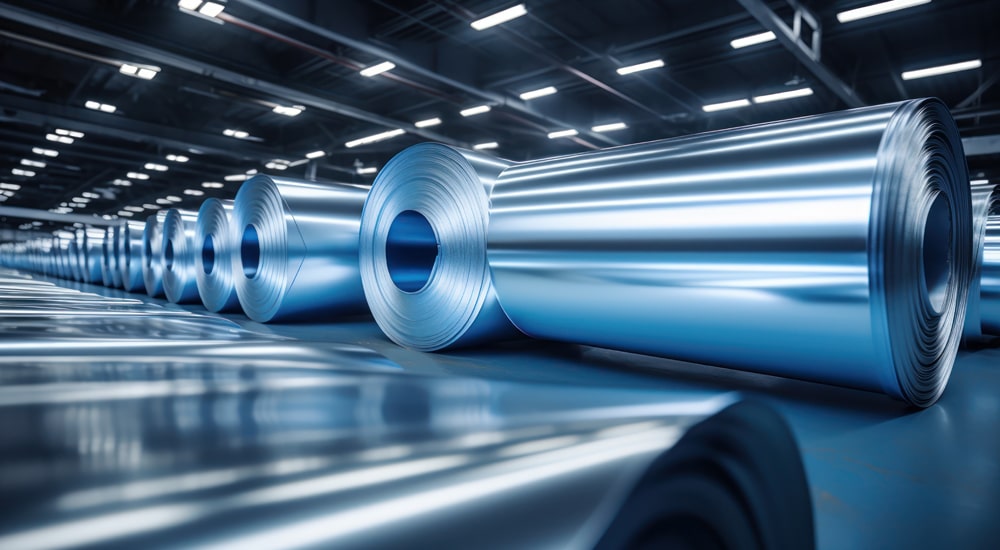
Steel has long been a cornerstone of modern infrastructure, and its role is especially critical in the energy sector. From supporting renewable energy projects to bolstering traditional energy systems, steel provides the strength, durability, and flexibility required to meet the demands of contemporary energy infrastructure. This article explores how steel contributes to building resilient and efficient energy solutions, examining its applications, advantages, and the future of steel in this vital sector.
1. Supporting Renewable Energy Projects
- Wind Turbines: Steel plays a pivotal role in the construction of wind turbines, which are essential for harnessing wind energy. The towers of wind turbines, often made from high-strength steel, must be able to withstand harsh environmental conditions and high wind loads. Steel’s strength-to-weight ratio allows for the creation of tall, slender towers that can reach higher altitudes where wind speeds are greater. Additionally, steel is used in the turbine's nacelle and rotor components, providing the necessary structural integrity and reliability.
- Solar Power Systems: In solar power installations, steel is used for mounting structures and frames that support photovoltaic (PV) panels. The durability and weather resistance of steel ensure that these support structures can withstand various environmental conditions, from high winds to heavy snow loads. The adaptability of steel allows for the design of both ground-mounted and rooftop solar arrays, optimizing the efficiency of solar energy capture and conversion.
- Hydropower Infrastructure: Steel is integral to the construction of hydropower infrastructure, including dams, penstocks, and turbines. The material's strength and resistance to corrosion make it suitable for handling the immense pressures and forces involved in hydropower systems. Steel components ensure the safety and efficiency of water flow management, which is crucial for generating reliable hydropower.
2. Enhancing Traditional Energy Systems
- Oil and Gas Pipelines: Steel is the material of choice for constructing oil and gas pipelines due to its strength, durability, and resistance to internal pressure. The extensive network of pipelines that transport oil and gas across vast distances relies on steel to maintain structural integrity and safety. Steel pipelines are engineered to handle the stresses of high-pressure fluids and extreme temperatures, ensuring the efficient and secure transport of energy resources.
- Power Generation Plants: In power generation plants, steel is used in various components, including boiler structures, heat exchangers, and turbine housings. The material’s thermal conductivity and resistance to high temperatures make it ideal for withstanding the demanding conditions within power plants. Steel’s strength supports the large-scale machinery required for energy production, contributing to the efficiency and reliability of power generation.
- Electric Transmission and Distribution: Steel is essential for electric transmission and distribution infrastructure, including transmission towers and substations. The strength of steel towers supports the high-voltage power lines that transmit electricity across long distances. Additionally, steel is used in various components of substations, ensuring the safe and efficient distribution of electricity to end-users.
3. Building Resilience in Energy Infrastructure
- Earthquake-Resistant Design: In regions prone to seismic activity, steel’s flexibility and ductility contribute to earthquake-resistant designs. Steel structures can absorb and dissipate seismic energy, reducing the risk of damage during earthquakes. This resilience is particularly important for critical energy infrastructure, such as power plants and transmission towers, which must remain operational during and after seismic events.
- Corrosion Protection: Corrosion resistance is a critical consideration for energy infrastructure exposed to harsh environmental conditions, such as marine environments or chemical exposures. Steel can be protected through various methods, including galvanizing, coating, and alloying. These protective measures ensure the longevity and reliability of steel components in challenging environments.
- Disaster Recovery and Redundancy: Steel’s durability and strength support the creation of energy infrastructure with built-in redundancy and disaster recovery capabilities. For example, steel-framed buildings and structures can be designed to withstand extreme weather events, minimizing downtime and facilitating quick recovery in the aftermath of disasters. This resilience helps ensure a stable and reliable energy supply.
4. Advancing Efficiency Through Innovation
- High-Strength Low-Alloy (HSLA) Steels: The development of high-strength low-alloy (HSLA) steels has led to more efficient and lightweight energy infrastructure. HSLA steels offer improved strength and toughness compared to traditional steels, allowing for the construction of more efficient and cost-effective energy systems. These advanced steels contribute to the overall performance and longevity of energy infrastructure.
- Smart Technologies and Steel Integration: The integration of smart technologies with steel infrastructure enhances the efficiency and monitoring of energy systems. Steel components equipped with sensors and monitoring devices provide real-time data on performance, condition, and potential issues. This data-driven approach allows for proactive maintenance and optimization, improving the overall efficiency of energy infrastructure.
- Sustainable Steel Production: Efforts to reduce the environmental impact of steel production align with the goals of sustainable energy development. Innovations in steelmaking, such as the use of electric arc furnaces and hydrogen-based processes, are reducing carbon emissions and promoting the use of recycled materials. Sustainable steel production supports the broader objective of creating environmentally responsible energy infrastructure.
5. Future Directions
- Integration with Renewable Energy Technologies: The future of steel in energy infrastructure will increasingly involve integration with emerging renewable energy technologies. For instance, steel may be used in the construction of floating wind turbines and advanced solar concentrators. As energy systems evolve, steel’s adaptability will continue to play a key role in supporting innovative solutions.
- Circular Economy and Recycling: The principles of a circular economy are influencing the steel industry, with a focus on recycling and resource efficiency. Recycled steel is being increasingly used in energy infrastructure projects, reducing the demand for virgin materials and minimizing waste. The adoption of circular economy practices will enhance the sustainability of steel-based energy solutions.
- Collaboration and Research: Collaboration between industry stakeholders, researchers, and technology developers will drive advancements in steel applications for energy infrastructure. Ongoing research into new steel alloys, manufacturing techniques, and design innovations will contribute to the development of more resilient, efficient, and sustainable energy systems.
Conclusion
Steel’s role in energy infrastructure is indispensable, providing the strength, durability, and versatility needed for both traditional and renewable energy systems. Its applications range from supporting wind turbines and solar panels to constructing pipelines and power plants. As the energy sector continues to evolve, steel will remain a crucial material in building resilient and efficient energy solutions. Through innovation, sustainability, and collaboration, steel will help shape the future of energy infrastructure, contributing to a more reliable and sustainable energy landscape.





